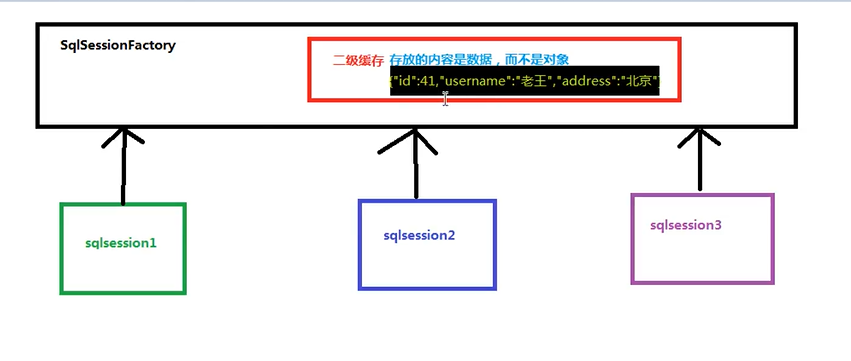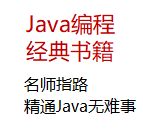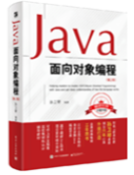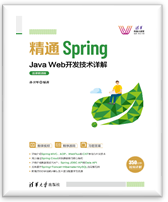|
|
mybatis的缓存和注解开发- mybatis中的加载时机(查询的时机)
- mybatis中的一级缓存和二级缓存
- mybatis的注解开发
- 单表CRUD
- 多表查询
一、内容概要 1、Mybatis中的延迟加载
问题:在一对多中,当我们有一个用户,它有100个账户。
在查询用户的时候,要不要把关联的账户查出来?
在查询账户的时候,要不要把关联的用户查出来?
在查询用户时,用户下的账户信息应该是,什么时候使用,什么时候查询的。
在查询账户时,账户的所属用户信息应该是随着账户查询时一起查询出来。
什么是延迟加载: 在真正使用数据时才发起查询,不用的时候不查询。按需加载(懒加载)
什么是立即加载: 不管用不用,只要一调用方法,马上发起查询。
在对应的四种表关系中:一对多,多对一,一对一,多对多
一对多,多对多:通常情况下我们都是采用延迟加载。
多对一,一对一:通常情况下我们都是采用立即加载。
2、Mybatis中的缓存
什么是缓存: 存在于内存中的临时数据。
为什么使用缓存: 减少和数据库的交互次数,提高执行效率。
什么样的数据能使用缓存,什么样的数据不能使用:
适用于缓存:
经常查询并且不经常改变的。
数据的正确与否对最终结果影响不大的。
不适用于缓存:
经常改变的数据
数据的正确与否对最终结果影响很大的。
例如:商品的库存,银行的汇率,股市的牌价。
Mybatis中的一级缓存和二级缓存
一级缓存:
它指的是Mybatis中SqlSession对象的缓存。
当我们执行查询之后,查询的结果会同时存入到SqlSession为我们提供一块区域中。
该区域的结构是一个Map。当我们再次查询同样的数据,mybatis会先去sqlsession中
查询是否有,有的话直接拿出来用。
当SqlSession对象消失时,mybatis的一级缓存也就消失了。
二级缓存:
它指的是Mybatis中SqlSessionFactory对象的缓存。由同一个SqlSessionFactory对象创建的SqlSession共享其缓存。
二级缓存的使用步骤:
第一步:让Mybatis框架支持二级缓存(在SqlMapConfig.xml中配置)
第二步:让当前的映射文件支持二级缓存(在IUserDao.xml中配置)
第三步:让当前的操作支持二级缓存(在select标签中配置)
3、Mybatis中的注解开发 二、Mybatis中的延迟加载 1.一对一实现延迟加载
IAccountDao.xml
<?xml version="1.0" encoding="UTF-8"?>
<! DOCTYPE mapper
PUBLIC "-//mybatis.org//DTD Mapper 3.0//EN"
"http://mybatis.org/dtd/mybatis-3-mapper.dtd">
<mapper namespace="net.javathinker.dao.IAccountDao">
<!-- 定义封装account和user的resultMap -->
<resultMap id="accountUserMap" type="account">
<id property="id" column="id"></id>
<result property="uid" column="uid"></result>
<result property="money" column="money"></result>
<!-- 一对一的关系映射:配置封装user的内容
select属性指定的内容:查询用户的唯一标识:
column属性指定的内容:用户根据id查询时,所需要的参数的值
-->
<association property="user" column="uid" javaType="user" select="net.javathinker.dao.IUserDao.findById"></association>
</resultMap>
<!-- 查询所有 -->
<select id="findAll" resultMap="accountUserMap">
select * from account
</select>
<!-- 根据用户id查询账户列表 -->
<select id="findAccountByUid" resultType="account">
select * from account where uid = #{uid}
</select>
</mapper> |
SqlMapConfig.xml
<?xml version="1.0" encoding="UTF-8"?>
<! DOCTYPE configuration
PUBLIC "-//mybatis.org//DTD Config 3.0//EN"
"http://mybatis.org/dtd/mybatis-3-config.dtd">
<configuration>
<!-- 配置properties-->
<properties resource="jdbcConfig.properties"></properties>
<!--配置参数-->
<settings>
<!--开启Mybatis支持延迟加载-->
<setting name="lazyLoadingEnabled" value="true"/>
<setting name="aggressiveLazyLoading" value="false"></setting>
</settings>
<!--使用typeAliases配置别名,它只能配置domain中类的别名 -->
<typeAliases>
< package name="net.javathinker.domain"></ package>
</typeAliases>
<!--配置环境-->
<environments default="mysql">
<!-- 配置mysql的环境-->
<environment id="mysql">
<!-- 配置事务 -->
<transactionManager type="JDBC"></transactionManager>
<!--配置连接池-->
<dataSource type="POOLED">
<property name="driver" value="${jdbc.driver}"></property>
<property name="url" value="${jdbc.url}"></property>
<property name="username" value="${jdbc.username}"></property>
<property name="password" value="${jdbc.password}"></property>
</dataSource>
</environment>
</environments>
<!-- 配置映射文件的位置 -->
<mappers>
< package name="net.javathinker.dao"></ package>
</mappers>
</configuration> |
2.多对多实现延迟加载
IUserDao.xml
<?xml version="1.0" encoding="UTF-8"?>
<! DOCTYPE mapper
PUBLIC "-//mybatis.org//DTD Mapper 3.0//EN"
"http://mybatis.org/dtd/mybatis-3-mapper.dtd">
<mapper namespace="net.javathinker.dao.IUserDao">
<!-- 定义User的resultMap-->
<resultMap id="userAccountMap" type="user">
<id property="id" column="id"></id>
<result property="username" column="username"></result>
<result property="address" column="address"></result>
<result property="sex" column="sex"></result>
<result property="birthday" column="birthday"></result>
<!-- 配置user对象中accounts集合的映射 -->
(批注:在映射配置文件中 调用相关联的一方的根据id查询的方法)
<collection property="accounts" ofType="account" select="net.javathinker.dao.IAccountDao.findAccountByUid" column="id"></collection>
</resultMap>
<!-- 查询所有 -->
<select id="findAll" resultMap="userAccountMap">
select * from user
</select>
<!-- 根据id查询用户 -->
<select id="findById" parameterType="INT" resultType="user">
select * from user where id = #{uid}
</select>
</mapper> |
三、Mybatis中的缓存 1.测试一级缓存
/**
* 测试一级缓存
*/
@Test
public void testFirstLevelCache(){
User user1 = userDao.findById(41 );
System.out.println(user1);
// sqlSession.close();
// 再次获取SqlSession对象
// sqlSession = factory.openSession();
sqlSession.clearCache(); // 此方法也可以清空缓存
userDao = sqlSession.getMapper(IUserDao. class );
User user2 = userDao.findById(41 );
System.out.println(user2);
System.out.println(user1 == user2);
} |
一级缓存是SqlSession范围的缓存,当调用SqlSession的修改,添加,删除,commit(),close()等 方法时,就会清空一级缓存。
2.测试二级缓存
第一步:让Mybatis框架支持二级缓存(在SqlMapConfig.xml中配置)
<?xml version="1.0" encoding="UTF-8"?>
<! DOCTYPE configuration
PUBLIC "-//mybatis.org//DTD Config 3.0//EN"
"http://mybatis.org/dtd/mybatis-3-config.dtd">
<configuration>
<!-- 配置properties-->
<properties resource="jdbcConfig.properties"></properties>
<settings>
<setting name="cacheEnabled" value="true"/>
</settings>
<!--使用typeAliases配置别名,它只能配置domain中类的别名 -->
<typeAliases>
< package name="net.javathinker.domain"></ package>
</typeAliases>
<!--配置环境-->
<environments default="mysql">
<!-- 配置mysql的环境-->
<environment id="mysql">
<!-- 配置事务 -->
<transactionManager type="JDBC"></transactionManager>
<!--配置连接池-->
<dataSource type="POOLED">
<property name="driver" value="${jdbc.driver}"></property>
<property name="url" value="${jdbc.url}"></property>
<property name="username" value="${jdbc.username}"></property>
<property name="password" value="${jdbc.password}"></property>
</dataSource>
</environment>
</environments>
<!-- 配置映射文件的位置 -->
<mappers>
< package name="net.javathinker.dao"></ package>
</mappers>
</configuration> |
第二步:让当前的映射文件支持二级缓存(在IUserDao.xml中配置)
第三步:让当前的操作支持二级缓存(在select标签中配置)
<?xml version="1.0" encoding="UTF-8"?>
<! DOCTYPE mapper
PUBLIC "-//mybatis.org//DTD Mapper 3.0//EN"
"http://mybatis.org/dtd/mybatis-3-mapper.dtd">
<mapper namespace="net.javathinker.dao.IUserDao">
<!--开启user支持二级缓存 默认为true-->
<cache/>
<!-- 查询所有 -->
<select id="findAll" resultType="user">
select * from user
</select>
<!-- 根据id查询用户 -->
<select id="findById" parameterType="INT" resultType="user" useCache="true">
select * from user where id = #{uid}
</select>
<!-- 更新用户信息-->
<update id="updateUser" parameterType="user">
update user set username=#{username},address=#{address} where id= #{id}
</update>
</mapper> |
 四、Mybatis中的注解开发 1.环境搭建
2.单表CRUD操作(代理Dao方式)
sqlMapConfig.xml
<?xml version="1.0" encoding="UTF-8"?>
<! DOCTYPE configuration
PUBLIC "-//mybatis.org//DTD Config 3.0//EN"
"http://mybatis.org/dtd/mybatis-3-config.dtd">
<configuration>
<!-- 引入外部配置文件-->
<properties resource="jdbcConfig.properties"></properties>
<!--配置别名-->
<typeAliases>
< package name="net.javathinker.domain"></ package>
</typeAliases>
<!-- 配置环境-->
<environments default="mysql">
<environment id="mysql">
<transactionManager type="JDBC"></transactionManager>
<dataSource type="POOLED">
<property name="driver" value="${jdbc.driver}"></property>
<property name="url" value="${jdbc.url}"></property>
<property name="username" value="${jdbc.username}"></property>
<property name="password" value="${jdbc.password}"></property>
</dataSource>
</environment>
</environments>
<!-- 指定带有注解的dao接口所在位置 -->
<mappers>
<mapper class="net.javathinker.dao.IUserDao"></mapper>
或者
<package name="net.javathinker.dao"></package>
</mappers>
</configuration> |
IUserDao
package net.javathinker.dao;
import net.javathinker.domain.User;
import org.apache.ibatis.annotations.Delete;
import org.apache.ibatis.annotations.Insert;
import org.apache.ibatis.annotations.Select;
import org.apache.ibatis.annotations.Update;
import java.util.List;
/**
* 在mybatis中针对,CRUD一共有四个注解
* @Select @Insert @Update @Delete
*/
public interface IUserDao {
/**
* 查询所有用户
* @return
*/
@Select("select * from user" )
List<User> findAll();
/**
* 保存用户
* @param user
*/
@Insert("insert into user(username,address,sex,birthday)values(#{username},#{address},#{sex},#{birthday})" )
void saveUser(User user);
/**
* 更新用户
* @param user
*/
@Update("update user set username=#{username},sex=#{sex},birthday=#{birthday},address=#{address} where id=#{id}" )
void updateUser(User user);
/**
* 删除用户
* @param userId
*/
@Delete("delete from user where id=#{id} " )
void deleteUser(Integer userId);
/**
* 根据id查询用户
* @param userId
* @return
*/
@Select("select * from user where id=#{id} " )
User findById(Integer userId);
/**
* 根据用户名称模糊查询
* @param username
* @return
*/
// @Select("select * from user where username like #{username} ")
@Select("select * from user where username like '%${value}%' " )
List<User> findUserByName(String username);
/**
* 查询总用户数量
* @return
*/
@Select("select count(*) from user " )
int findTotalUser();
} |
3.多表查询操作
使用注解来解决实体类属性与数据库表列名对应不上的问题
/**
* 查询所有用户
* @return
*/
@Select("select * from user" )
@Results(id="userMap",value= {
@Result(id= true,column = "id",property = "userId" ),
@Result(column = "username",property = "userName" ),
@Result(column = "address",property = "userAddress" ),
@Result(column = "sex",property = "userSex" ),
@Result(column = "birthday",property = "userBirthday" ),
})
List<User> findAll(); |
mybatis注解开发一对一的查询配置
public interface IAccountDao {
/**
* 查询所有账户,并且获取每个账户所属的用户信息
* @return
*/
@Select("select * from account" )
@Results(id="accountMap",value = {
@Result(id= true,column = "id",property = "id" ),
@Result(column = "uid",property = "uid" ),
@Result(column = "money",property = "money" ),
@Result(property = "user", column = "uid",one= @One(select="net.javathinker.dao.IUserDao.findById",fetchType= FetchType.EAGER))
})
List<Account> findAll();
/**
* 根据用户id查询账户信息
* @param userId
* @return
*/
@Select("select * from account where uid = #{userId}" )
List<Account> findAccountByUid(Integer userId);
} |
mybatis注解开发一对多的查询配置
package net.javathinker.dao;
import net.javathinker.domain.User;
import org.apache.ibatis.annotations.* ;
import org.apache.ibatis.mapping.FetchType;
import java.util.List;
@CacheNamespace(blocking = true )
public interface IUserDao {
/**
* 查询所有用户
* @return
*/
@Select("select * from user" )
@Results(id="userMap",value= {
@Result(id= true,column = "id",property = "userId" ),
@Result(column = "username",property = "userName" ),
@Result(column = "address",property = "userAddress" ),
@Result(column = "sex",property = "userSex" ),
@Result(column = "birthday",property = "userBirthday" ),
@Result(property = "accounts",column = "id" ,
many = @Many(select = "net.javathinker.dao.IAccountDao.findAccountByUid" ,
fetchType = FetchType.LAZY))
})
List<User> findAll();
/**
* 根据id查询用户
* @param userId
* @return
*/
@Select("select * from user where id=#{id} " )
@ResultMap("userMap" )
User findById(Integer userId);
/**
* 根据用户名称模糊查询
* @param username
* @return
*/
@Select("select * from user where username like #{username} " )
@ResultMap("userMap" )
List<User> findUserByName(String username);
} |
4. 缓存的配置
第一步:让Mybatis框架支持二级缓存(在SqlMapConfig.xml中配置)
<?xml version="1.0" encoding="UTF-8"?>
<! DOCTYPE configuration
PUBLIC "-//mybatis.org//DTD Config 3.0//EN"
"http://mybatis.org/dtd/mybatis-3-config.dtd">
<configuration>
<!-- 引入外部配置文件-->
<properties resource="jdbcConfig.properties"></properties>
<!--配置开启二级缓存-->
<settings>
<setting name="cacheEnabled" value="true"/>
</settings>
<!--配置别名-->
<typeAliases>
< package name="net.javathinker.domain"></ package>
</typeAliases>
<!-- 配置环境-->
<environments default="mysql">
<environment id="mysql">
<transactionManager type="JDBC"></transactionManager>
<dataSource type="POOLED">
<property name="driver" value="${jdbc.driver}"></property>
<property name="url" value="${jdbc.url}"></property>
<property name="username" value="${jdbc.username}"></property>
<property name="password" value="${jdbc.password}"></property>
</dataSource>
</environment>
</environments>
<!-- 指定带有注解的dao接口所在位置 -->
<mappers>
< package name="net.javathinker.dao"></ package>
</mappers>
</configuration> |
第二步:让当前的操作支持二级缓存(在select标签中配置)
@CacheNamespace(blocking = true )
public interface IUserDao {
/**
* 查询所有用户
* @return
*/
@Select("select * from user" )
@Results(id="userMap",value= {
@Result(id= true,column = "id",property = "userId" ),
@Result(column = "username",property = "userName" ),
@Result(column = "address",property = "userAddress" ),
@Result(column = "sex",property = "userSex" ),
@Result(column = "birthday",property = "userBirthday" ),
@Result(property = "accounts",column = "id" ,
many = @Many(select = "net.javathinker.dao.IAccountDao.findAccountByUid" ,
fetchType = FetchType.LAZY))
})
List<User> findAll(); |
测试方法
@Test
public void testFindOne(){
SqlSession session = factory.openSession();
IUserDao userDao = session.getMapper(IUserDao. class );
User user = userDao.findById(57 );
System.out.println(user);
session.close(); // 释放一级缓存
SqlSession session1 = factory.openSession(); // 再次打开session
IUserDao userDao1 = session1.getMapper(IUserDao. class );
User user1 = userDao1.findById(57 );
System.out.println(user1);
session1.close();
} |
----------------------------
原文链接:https://www.cnblogs.com/lsk-130602/p/12202311.html
程序猿的技术大观园:www.javathinker.net
[这个贴子最后由 flybird 在 2020-01-29 17:58:50 重新编辑]
|
|

















